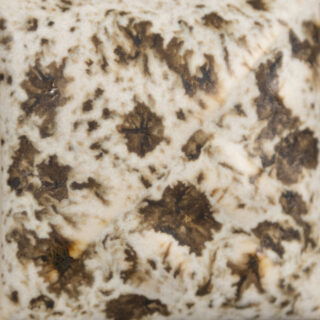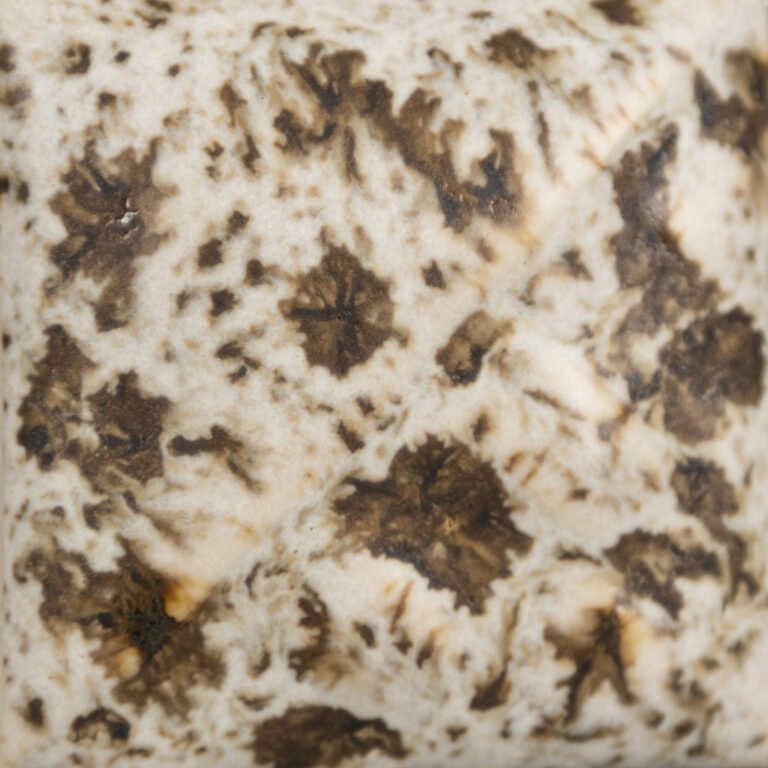Stoneware crystal glazes are designed to expand upon the surface with dazzling bursts of color. Fired results will vary based on ware’s orientation. Crystals will settle to the bottom of the jar and will need a good mixing prior to initial use. Re-stir between each coat. Stir with palette knife or other unpainted tool. Avoid placing crystals near the bottom third of a vertical piece as they may cause additional movement during firing. Crystals will flow more than the base glaze. While the glaze is wet, use your fan brush to redistribute the crystals to achieve balanced coverage. Over-application or heavy deposition of the crystals can cause pinholing or running. When storing a crystal glaze, you may consider storing upside down to facilitate crystal dispersion on the next use.
Chips shown are fired flat on a white clay body fired to cone 6 oxidation and cone 10 reduction. The choice of clay body, the thickness of glaze application, the firing process, and temperature will affect the fired results.
Cone 6 oxidation : Winter Wood is a matte white glaze that contains a variety of brown crystals that melt.
Cone 10 reduction : Color changes to a translucent golden brown.
TIP: SW-106 Alabaster is the base glaze. For a lighter crystal effect, you may try applying two coats of SW-106 Alabaster with a third coat of SW-155 Winter Wood.
Description:
The Ceramic School
At The Ceramic School, we are driven by a vision of a world where the transformative power of ceramics is accessible to all, inspiring creativity, celebrating diversity, and promoting sustainability, to contribute to a vibrant global community of artists and makers.
All Posts



